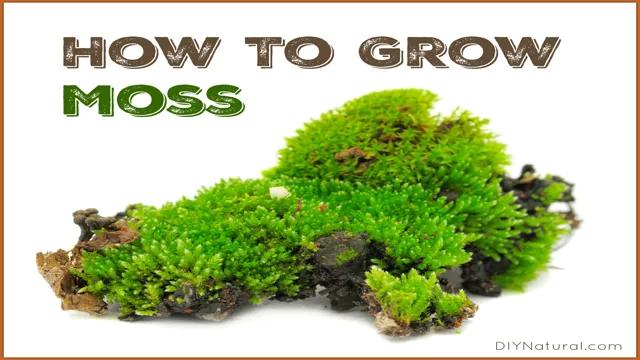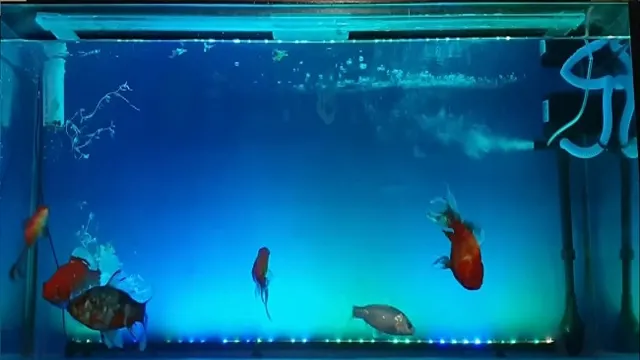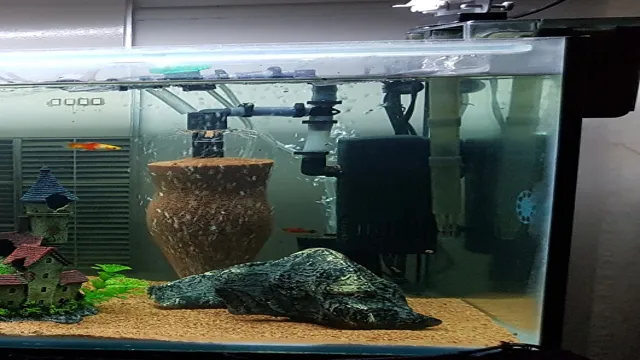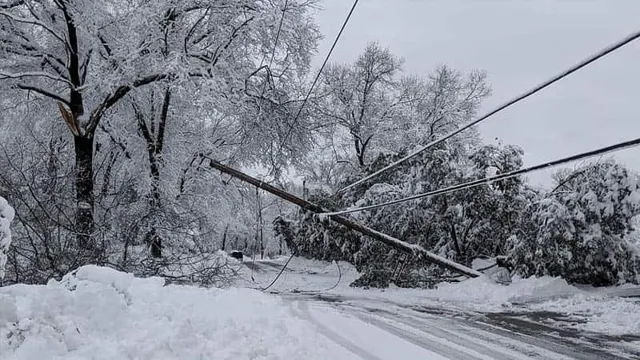As a fish enthusiast, nothing beats the beauty of a well-maintained aquarium. Plants play a huge role in providing a healthy aquatic environment, but what if you notice them wilting away? It can be disheartening to see your aquarium plants dying, but fear not, with careful observation and proactive measures, you can nurse them back to life. Firstly, it is essential to understand the underlying factors that could be responsible for the death of your aquarium plants.
Lighting, water quality, and nutrients are the three main variables that significantly affect plant health. Similarly, low carbon dioxide levels and poor substrate quality can also contribute to the sickly appearance of aquarium plants. To identify if your aquarium plants are dying, observe for signs such as yellowing of leaves, brown spots, and discolouration.
Similarly, sudden drop in leaves, stunted growth, and withered stems are also indicators of an unhealthy plant. It’s crucial to note that stress can also manifest in your aquatic plants causing them to wilt, so it’s essential to provide a conducive environment. The good news is that you can revive your aquarium plants by taking proactive measures.
These include changing the water quality, providing the right temperature, and ensuring a constant supply of carbon dioxide. Additionally, monitoring the lighting duration and adjusting nutrient levels can also play a significant role in nursing your aquarium plants back to health. The adage, “prevention is better than cure,” holds true for aquarium plants.
Proper maintenance and care can save you considerable time and effort in nursing dying plants back to health. By making slight adjustments and observing the plants carefully, you could maintain a healthy and beautiful aquarium that can be the envy of any fish enthusiast.
Symptoms of a Dying Aquarium Plant
Aquarium plants play a crucial role in maintaining the balance and health of the underwater ecosystem. Therefore, it’s essential to keep an eye on their growth and make sure they are thriving. However, sometimes it’s challenging to figure out if your plants are dying.
One of the most obvious signs is yellow or brown leaves. If the leaves are discolored and falling off, this indicates that the plant isn’t receiving enough nutrients or light. Another symptom of a dying aquarium plant is when the leaves begin to curl or shrivel up.
This is due to inadequate water flow and a lack of nutrients. You may also notice that the plant’s roots start to rot and diminish if they are becoming too crowded or there’s not enough oxygen in the water. In conclusion, keeping an eye on your aquarium plants will help boost the health of your aquatic life.
Remember to monitor them regularly and provide them with the necessary care they need to thrive.
Yellowed Leaves or Transparent Leaves
Aquarium Plant Aquarium plants can provide a beautiful and natural element to your fish tank, but sometimes they may not thrive as expected. One of the most common signs of a dying aquarium plant is yellowed or transparent leaves. This discoloration may be caused by various factors such as a lack of nutrients, inadequate lighting, or poor water quality.
If the leaves are yellowed, it may indicate a nutrient deficiency such as iron, magnesium, or potassium. On the other hand, if the leaves are transparent, it may be a sign of a lack of light. It is important to identify the cause of the problem and take action promptly to prevent further decline of the plant.
This can include adjusting the lighting, adding plant food or supplements, or conducting water changes to improve water quality. By taking appropriate steps, you can help ensure the longevity and health of your aquarium plant.

Leaf Drop or Stunted Growth
If you’ve noticed your aquarium plants dropping their leaves or looking stunted, it’s a sign that something isn’t quite right. These are common symptoms of a dying aquarium plant. There could be a number of reasons why your plants are struggling, but the most common causes are inadequate lighting, nutrient deficiencies, substrate issues, and CO2 imbalances.
Inadequate lighting can cause your plants to wither, while nutrient deficiencies can stunt their growth or cause leaf loss. It’s important to ensure that your plants are receiving all the necessary nutrients from the substrate and water. Additionally, if the CO2 levels are too high or too low in your tank, this can also contribute to plant health problems.
If you’re unsure what’s behind your aquarium plant woes, testing the water quality can help you identify the problem and address it accordingly. By maintaining a healthy balance of CO2, lighting, and nutrients, you’ll be able to enjoy thriving aquarium plants for years to come. (See Also: How to Make Driftwood for Aquarium in Hindi: Step by Step Guide)
Algae Growth on Plants
If you’re an aquarium owner, you may notice algae growth on your plants. This can be a sign that your plants are dying or struggling to survive. Algae can cover the leaves of the plants, making it difficult for them to absorb the necessary nutrients, leading to yellowing and wilting.
Additionally, too much algae growth can disrupt the balance of your aquarium ecosystem, leading to poor water quality and the risk of disease for your fish. Keeping a close eye on your plants and monitoring their health can help you catch algae growth before it becomes a major issue. Regular water changes and making sure the lighting and nutrient levels are appropriate can also help prevent algae from taking over.
Remember, healthy plants equal a healthy aquarium!
Root Decay or Browning
If you notice that your aquarium plants are starting to exhibit root decay or browning, it can be a sign that they are dying. Root decay occurs when the roots of the plants start to rot due to poor water quality, lack of nutrients, or inadequate light. Browning on the other hand, can be a result of physical damage or disease.
It is crucial to identify and address the root cause of the problem quickly before it spreads and infects other plants in the aquarium. If you’re unsure of what might be causing these symptoms, consider testing the water quality and adjusting the lighting and nutrient levels. It’s also important to regularly prune and remove dead or dying plant material to prevent further decay.
Remember, maintaining a healthy environment for your aquatic plants is key to their survival, so keep a close eye on any changes in their behavior and address any issues as soon as possible.
Possible Causes of Dying Aquarium Plants
If you’re an aquarium enthusiast, you know that keeping plants healthy can be just as challenging as managing your fish. So, how do you know if your aquarium plants are dying? Several factors can cause this problem, including poor water quality, improper lighting, lack of nutrients, and CO2 levels that are too low or too high. Water quality plays a critical role in the health of your aquarium plants, and an overgrowth of fish waste or uneaten food leads to poor water conditions.
Similarly, inadequate light levels can hamper photosynthesis, harming your plants’ ability to grow. Nutrient deficiencies, particularly nitrogen, phosphorus, and potassium, can also impact plant growth, resulting in yellowing, stunted leaves. In contrast, an excess of CO2 can stimulate growth while too low can cause plant health to decline.
It’s essential to diagnose any problems quickly and make the corresponding adjustments to keep your aquarium plants healthy.
Poor Water Quality
Poor water quality can be a major cause of dying aquarium plants, and there are several possible factors that contribute to it. One of the main culprits is high levels of ammonia. This occurs when there is not enough beneficial bacteria in the tank to break down the fish waste.
As a result, ammonia levels increase and can be toxic to plants. Another cause is high levels of nitrates, which result from overfeeding or inadequate water changes. Excessive nitrates can inhibit the plants’ ability to absorb nutrients and can lead to stunted growth or death.
Additionally, low levels of carbon dioxide can also contribute to poor plant health. Carbon dioxide is essential for photosynthesis, and without enough of it, plants cannot produce energy or grow properly. It’s important to monitor water quality regularly and address any imbalances to ensure the health and longevity of aquarium plants.
Lack of Light or Nutrients
Aquarium plants require proper lighting and nutrients to thrive. When these elements are lacking, the plants can start to die. Insufficient light can result in stunted growth, yellowing leaves, and eventually death.
The type of light matters too, as different plants require different spectrums of light. Nutrient deficiencies can also lead to plant death. If the water lacks essential nutrients such as iron, potassium, and magnesium, plants will struggle to survive. (See Also: How to Get to Vancouver Aquarium on Transit: The Complete Guide)
Nitrogen and phosphorus are also important, but too much of these nutrients can cause an overgrowth of algae. It’s important to strike a balance and provide the proper lighting and nutrients for the specific plants in your aquarium. Regular water changes and adding liquid fertilizers can help ensure your plants are getting what they need to thrive.
Remember, a healthy plant can contribute to the overall health of your aquarium ecosystem.
Overcrowding or Infestations
Aquarium plants can die for a variety of reasons, including overcrowding or infestations. Overcrowding occurs when there are too many plants in the aquarium, leading to a lack of oxygen and nutrients. This can cause the plants to become weak and eventually die.
Infestations can also harm plants, as pests like snails and algae eat away at the foliage. Additionally, certain fish species can damage plants with their constant nibbling or rooting around the roots. To prevent these issues, it’s important to properly maintain the aquarium by regularly cleaning it, providing appropriate amounts of light and nutrients, and avoiding overstocking with fish or plants.
By addressing these potential causes, you can keep your aquarium plants healthy and thriving.
Preventing and Treating Dying Aquarium Plants
One of the most common questions that aquarium enthusiasts ask is: how to know if aquarium plants are dying? While there are many signs that can indicate the death of your aquatic plants, the most obvious one is discoloration. Yellow or brown leaves are a telltale sign that your plant is not doing well. Another indication is the wilting of the plant or softening of stem and leaves.
This could be due to lack of proper lighting, fertilizer or CO2 levels, unmatched pH or inadequate aeration which obstruct plant growth. To prevent your aquarium plants from dying, ensuring proper lighting, optimal pH levels, and limited or no carbon dioxide depletion is essential. Regular deep-cleaning is also necessary to remove debris or unhealthy plants that could spread diseases to healthy ones.
Treating dying aquarium plants involves detailed diagnosis of the plant and setting up the required action plan, which could include trimming or pruning dead parts, treating with plant-friendly medicines and ensuring the ideal living environment. Knowing these tips will go a long way in maintaining a thriving aquatic ecosystem and keeping your aquarium plants healthy.
Maintain Good Water Quality
Maintaining good water quality is crucial for preventing and treating dying aquarium plants. Poor water quality can cause a range of problems such as algae overgrowth, bacterial infections, and nutrient deficiencies. For instance, if the water is too acidic, it can damage plant roots and hinder nutrient uptake.
On the other hand, high nitrate levels can lead to stunted growth and even death. Therefore, it’s essential to test the aquarium water regularly and keep parameters within the optimum range. Some measures that you can take include regular water changes, using a high-quality filter, ensuring proper aeration, and adding fertilizers and supplements as needed.
By taking good care of your aquatic environment, you can ensure healthy and vibrant plant growth while minimizing the risk of plant dying or disease.
Provide Proper Lighting and Nutrients
Aquarium plants are beautiful additions to any aquarium, but they can be finicky and require proper lighting and nutrients to thrive. If your aquarium plants are wilted or dying, it may be due to inadequate lighting or a lack of nutrients. To prevent this, you should provide your plants with the appropriate lighting based on their needs and ensure they receive the necessary nutrients through fertilizer and regular water changes.
Additionally, it’s essential to monitor the health of your plants regularly to catch any issues early on and address them promptly. By providing your aquarium plants with the right environment, they can thrive and add a vibrant element to your aquarium. Remember, healthy plants make for happy fish! (See Also: How to Add Blue Light to Aquarium Timer: A Step-by-Step Guide)
Prune and Propagate as Needed
Aquarium plants can often experience problems that lead to dying or withering. To prevent this from happening, prune and propagate your plants as needed. Regularly cut back any dead or damaged leaves or stems, which can attract harmful bacteria and pull nutrients away from healthy growth.
By removing these parts, you can redirect the plant’s energy towards new growth and prevent further decay. Additionally, regularly propagating your plants will ensure that they continue to thrive and multiply, rather than becoming overgrown and choking themselves out. Be sure to provide your plants with adequate lighting, nutrition, and CO2 levels, as these factors can also play a significant role in their health.
Remember, taking preventative measures and consistent maintenance can lead to a thriving and beautiful aquatic environment for you and your fish to enjoy.
Conclusion
If your aquarium plants are looking like they may soon kick the bucket, fear not! By carefully observing your plants, checking for signs of wilting or discoloration, and ensuring the proper maintenance of your aquarium, you can easily identify and rectify any dying buds. Just remember, you don’t need a green thumb to keep your aquatic plants thriving – only a little patience, TLC, and a willingness to dive into the aquatic world of plant care!”
FAQs
How can I tell if my aquarium plants are dying?
Some signs to look out for include yellow or brown leaves, stunted growth, and decaying roots. You can also test the water quality to ensure that the pH, nutrient levels, and lighting are optimal for plant growth.
What are some common causes of aquarium plant death?
Overcrowding, poor water quality, insufficient light or nutrients, and improper planting techniques are some common causes of aquarium plant death.
What steps can I take to revive dying aquarium plants?
Try adjusting the lighting and nutrient levels, as well as pruning any dead or decaying plant matter. You may also need to fertilize or add CO2 to the water in order to restore the plants’ health.
Can I use tap water to water my aquarium plants?
Tap water can contain chlorine or other chemicals that can harm your aquarium plants. It’s best to use filtered or dechlorinated water to ensure the health of your plants.
Do certain types of aquarium plants require different care?
Yes, different types of plants may require different levels of light, nutrients, and water quality. It’s important to research the specific needs of each plant species in your aquarium.
How often should I prune my aquarium plants?
Pruning can help promote healthy growth and prevent overcrowding. Aim to prune your aquarium plants every 2-4 weeks, depending on their growth rate.
Why are my aquarium plants turning yellow?
Yellowing leaves can be a sign of poor water quality, insufficient lighting, or a lack of nutrients. Test your water and adjust your care routine accordingly to help revive your plants.







